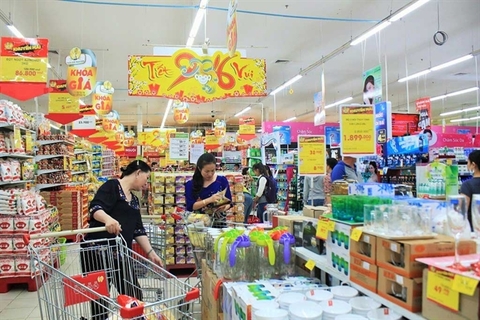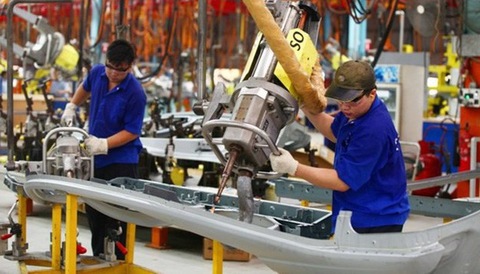Vietnamese agriculture strengthened by M&A
Vietnamese agriculture strengthened by M&A
With the country’s agricultural sector pursuing greater sustainable development, mergers and acquisitions are helping the sector create positive changes thanks in part to the support of high technology.
Vietnam’s mergers and acquisitions (M&A) market recently acknowledged a VND649 billion ($28.21 million) investment by German development finance institution DEG into Vietnam’s Thanh Thanh Cong-Bien Hoa Sugar JSC (SBT). The investment is expected to be disbursed in September, as SBT’s charter capital will increase by 3.7 per cent to more than VND6.084 trillion ($264.5 million). The capital raised will contribute to the material farming area development plan in Indochina over 70,000 hectares.Meanwhile, other major private placement M&A deals in the country have taken place over the past year in agriculture. As noted by the Mergers & Acquisitions Forum (MAF) research in accordance with the Corporate Investment and Mergers & Acquisitions Centre (CMAC), highlights also include Truong Hai Auto Corporation (THACO) with Hoang Anh Gia Lai Group (HAGL), and Japan’s Sojitz Corporation with Vietnam’s The PAN Group.
Although agriculture is not among the leading sectors for M&A in the country as yet, it has nonetheless witnessed the massive entrance of big groups such as THACO, Vingroup, The PAN Group, GTNfoods, and Unifarm, and others demonstrating that the income from agriculture is not on a small scale.
THACO is known as a large-scale manufacturer in the automobile sector with more than 20 years’ experience in manufacturing, assembling, distributing, and providing maintenance and repair services. Last year, it turned towards investing in agriculture by signing an agreement on strategic co-operation with HAGL and its subsidiary Hoang Anh Gia Lai Agricultural JSC (HNG). Accordingly, THACO invested VND22 trillion ($956.52 million) to own 35 per cent of HNG’s shares.
The group’s investment has included a research and development centre for seeds, agricultural materials, biotechnology, organic cultivation, harvesting, preservation, and processing techniques. THACO’s aim is to build industrial model production farms for high-value fruit trees and forest trees with the application of synchronous mechanisation.
Significant deals
Meanwhile, with the strategy of becoming a pioneering agriculture and food group with a dream to advance Vietnamese agriculture, The PAN Group has not only conducted M&A deals at the group level but also among its member companies.
In 2018, the group successfully bought and raised the ownership rate to 94.66 per cent at Southern Seed Company (SSC), before consolidating the scale of Vietnam National Seed Company (NSC) in the seed market. NSC is currently the largest company in Vietnam’s seed industry, which is owned by PAN Farm under The PAN Group. It has been orientating towards investing in hi-tech agriculture.
Currently, The PAN Group through NSC has poured money into a modern seed factory in the northern province of Ha Nam, while it is also considering the production of flower and vegetable varieties. Since last November, the group has been pouring capital into Vietnam Fumigation JSC (VFG) – a 45-year-old agro-pharmaceutical company. Earlier this year, its raised the ownership rate in VFG to 41.88 per cent. At the same time, The PAN Group also completed the private placement of VND817.4 billion ($35.5 million) for Sojitz.
According to Nguyen Duy Hung, chairman of The PAN Group, the group will focus on searching for opportunities from its member companies to go into every segment of the agricultural and food sectors, aiming to consolidate leading companies with resources and markets, as well as the development of organic products in member companies.
Another player with the participation of most big shareholders is GTNfoods, which is heavily interested in Vietnam’s agricultural sector.
This company again chose to build common infrastructure through investment in state-owned enterprises (SOEs) with a long history of operations, popular branding, strong infrastructure, but GTNfoods has faced many barriers in developing distribution, sales, and marketing channels.
Meanwhile, as a unit carrying out M&A deals with SOEs including Lam Dong Foodstuffs JSC, Vinatea, and Moc Chau Milk, GTNfoods boasts six subsidiaries and two affiliates with market capitalisation value of nearly VND 2.7 trillion ($117.4 million).
In addition, there are many other major cases in a strong M&A position in agriculture such as Masan Nutri-Science and Loc Troi Group JSC.
Meanwhile, according to Tran Quang Hoi, founder of Japan-Vietnam mediators Ecobuy Business & Service, many Japanese firms have also invested into Vietnam’s agricultural sector over the years.
“In the second half of 2019 and early in 2020 there will be more Japanese financiers who will be interested in M&A deals because Vietnam’s potential is huge, with many strong products like melons, mushrooms, herbs, and chicken,” Hoi told VIR.
M&A agriculture positives
Witnessing the improvement of Vietnamese farms after M&A deals, Hoi highly appreciated the impact of these deals to Vietnam’s agricultural sector. “While Vietnamese producers work in traditional methods with less support in machinery and technical criteria, the participation of Japanese investors has helped those farms work automatically in a greener way, bringing products with better quality,” Hoi affirmed.
Meanwhile, after several months co-operating with THACO, HNG’s harvest area of fruit has also witnessed significant increase of revenue compared to last year, offsetting the big costs incurred. Leaders of HNG hoped that these positive results will help the stock remain robust.
The PAN Group, thanks to revenue from the share offering to Sojitz, has increased its ownership in VFG with a total amount of nearly VND511 billion ($22.2 million). The remaining unused amount is about VND280 billion ($12.17 million). According to Hung of The PAN Group, it will invest in technology and support to improve operating processes at its member units.
“The return on investment will come later. We must accept that we have to invest in the early stages of development. After everything goes into orbit, revenue and profit will start to grow faster and the group will reap positive results,” Hung said.
After selling 95 per cent of its shares to GTNfoods in 2016, Vinatea has changed spectacularly. Nguyen Hong Anh, deputy general director of GTNfoods, said that Vinatea now includes clean planting areas in accordance with international standards, and the international market has expanded to high-demanding countries.
“In 2018, Vinatea achieved the highest direct export volume with the most expanded export markets,” Anh said.
Before the deal between THACO and HNG, Prime Minister Nguyen Xuan Phuc stated that the participation of big corporations in hi-tech agriculture helps not only address capital and corporate governance issues, but also increase the output for products, as well as avoid the situation of good crops at a bad price.
Meanwhile, according to Do Nang Vinh, representative of the Vietnam Institute of Agricultural Genetics, M&A has become stronger. “Win-win is the trend of global agricultural companies. Besides reducing the state monopoly status, M&A also creates a concentration of huge capital resources to invest in scientific research and innovation,” Vinh said.
Echoing this view, Nguyen Viet Khoi, associate dean of the Faculty of International Business and Economics under the University of Economics and Business of the Vietnam National University in Hanoi, told VIR, “M&A deals in agriculture with the participation of large companies, including those from South Korea or Japan for example, will help Vietnam’s agriculture develop in a green, organic, and safe way. It will help create products with high quality which can be exported back to demanding markets, thus contributing to Vietnam’s increase in export volume.”
According to Khoi, after M&A, Vietnam’s SOEs in the agricultural sector have shown the positive changes that can be achieved with accessing new professional management systems and abundant capital.
Therefore, M&A remains the door for the country’s agriculture to quickly develop thanks to the participation of such investors, as well as capital from overseas investment funds.























